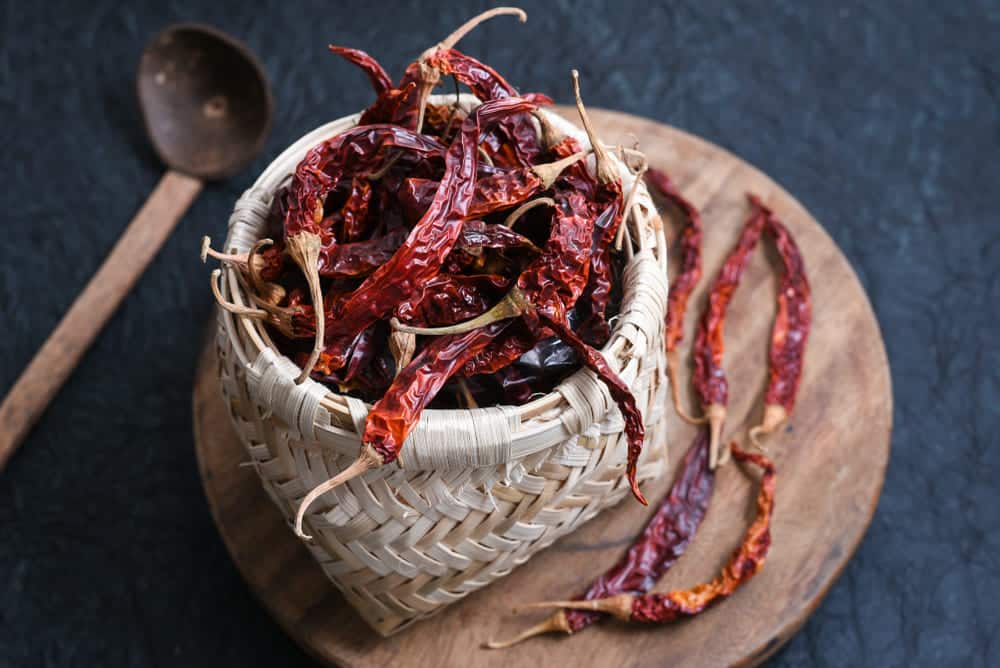
DISCLOSURE: This post may contain affiliate links, meaning when you click the links and make a purchase, I receive a commission. As an Amazon Associate I earn from qualifying purchases.
Are you trying out a new recipe that your Indian neighbor or colleague has given to you? Many South Asian recipes call for the use of these unique Kashmir chilies.
It’s so hard to distinguish different varieties of chilies since most of them seem the same, but you should know that there’s a huge difference between the taste of Kashmiri chilies and others.
If you’re a fan of spices and chilies, you probably know that Kashmiri chilies are some of the best chilies around. Since they are hard to find in some parts of the world, you might be interested in a few alternatives, however.
The heat level of this chili is generally mild and has a range of 1000-2000 Scoville heat units. The range indicates that it’s relatively normal and is perfect for those who don’t want smoke blowing out of their ears when they are eating their favorite foods.
They are frequently used to add beautiful red color to the dish, and a zingy smell.
Fresh Kashmiri chilies are hard to come by. You will usually find them in dried and wrinkled form. However, the peppers maintain the color and taste, even if their appearance might indicate something else.
They are smaller than typical peppers but have the same elongated shape. The chili adds a bit of a zing to the dish, but it also has a slight fruity flavor.
We often talk about how many spices and chilies come from Asia. However, the important thing is how the South Asians use these spices in their dishes.
Kashmiri chilies are used in many curries and stews to add bright red color and a nice taste. You could use it as garnishing in your favorite dishes, and it’s also a fantastic choice for when you want to add a bit of spice to your dishes.
Kashmiri Chillies Substitutes
However, if you can’t find a decent substitute for Kashmiri chilies, it might be a wise idea to look for a few alternatives. Here are some of the most popular substitutes for Kashmiri chilies.
1. Kashmiri Chili Powder
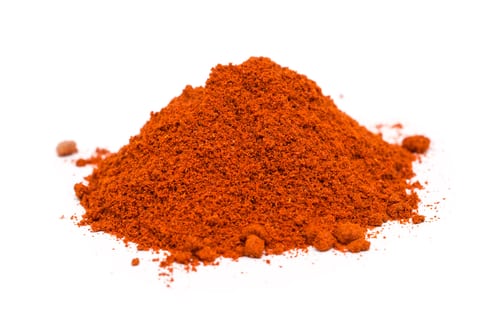
In most parts of Europe and the United States, the chances of finding fresh Kashmiri chilies are slim. Although you may be lucky enough to find some, you can always substitute the fresh chilies with their powdered form.
Recipes calling for Kashmiri chilies are best made using fresh chilies, as they rely on the tinge of spice that these chilies add up.
The heat level is mild, as mentioned above. Before food coloring dye was famous, the red color in tandoori chicken came from Kashmiri chili powder. The powder will add red color to oils, meat, and onions.
Thus, if there’s a section for Indian spices in your local grocery store, you might want to take a look there to see if you can find a packet of Kashmiri chili powder.
2. Combination Of Paprika And Cayenne
Your closest replacement would be a mix of paprika and cayenne pepper. Both of these would add the red color that’s usually offered by Kashmiri chilies.
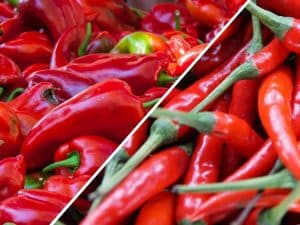
The quantity would be three parts of paprika with only one part of cayenne pepper. You could use sweet and smoky paprika with cayenne to give it a bit more zest.
The other option is to use the common paprika. The difference would be the smoky touch.
Additionally, paprika and cayenne also offer numerous health benefits. Cayenne plays its part in boosting your immune system, reducing pain, improving digestion, and lowering blood pressure.
Adding paprika to your diet can improve your vision, reduce inflammation, control diabetes and bring down your cholesterol.
3. Byadgi Chili
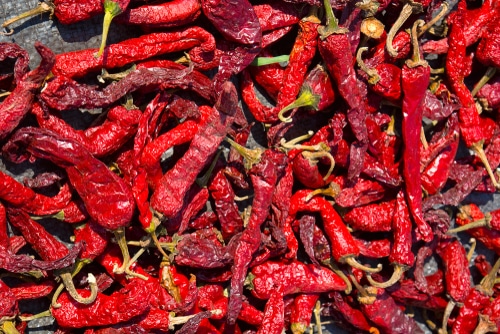
These chilis are famous in India and are named after the area in which it is grown. Oleoresin is an oil present in these chilies. The oil is commercially useful for cosmetic purposes like lipstick and nail polishes.
The color of the chili is similar to Kashmiri chili. These two are often confused because of their appearance.
Byadgi gives off red color to meat and other color-absorbing items. In the dry form, these chilies maintain a vibrant red color. Thus, it is famous for commercial use. However, the major difference comes in the heat level of the two.
Byadgi is very hot and ranges from 50k-100k Scoville Unit Heat. If you want a similar chili but with a fiery, hot taste, go for Byadgi. Make sure to use the chili in moderate quantities initially to prevent abnormal spiciness in your dish.
4. Guajillo Chilies
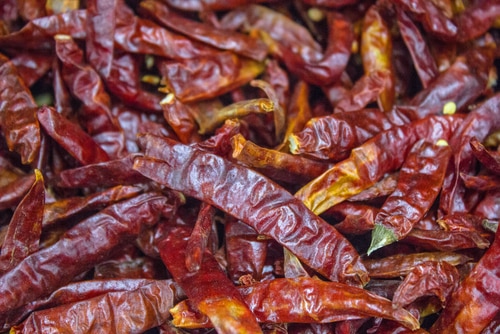
Another homemade combination is guajillo chilies. Add four pieces of guajillo, a teaspoon of black tea, and one paprika tablespoon to replicate the taste of Kashmiri chilies. It is not an exact match, but you can try it out to see if it falls under your requirement.
5. Deggi
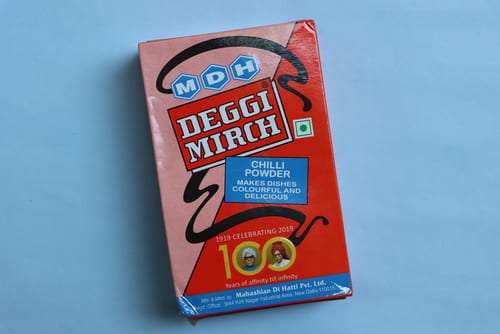
If you are looking for another viable substitute, you might want to try out Deggi Mirch. Commonly used in South Asian cuisine, especially Indian, Deggi Mirch is commonly available in most large supermarkets.
Deggi Mirch doesn’t just contain one specific spice; it’s usually made with a combination of different spices that are quite popular throughout the northern regions of India.
In fact, Kashmiri chili is one of the many spices that is mixed into Deggi Mirch. Keep in mind that because it contains a variety of different spices, Deggi Mirch is a bit spicier than Kashmiri chili.
It’s commonly used in a variety of dishes throughout India, and that is one of the main reasons why you’ll find it quite easily at almost every major superstore.
6. Soak Some Red Chilies
If you can’t find Kashmiri chilies to add to your dish, you might want to consider using soaked red chilies. This might come as a surprise to most people, but soaked red chilies can give you the perfect shade of red for the dish that you need.
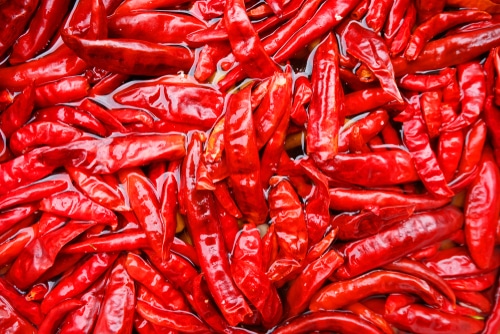
When you soak the chilies, just choose ones that are not incredibly hot. Before you start using red chilies, it’s important that you deseed them and then put them in a bowl full of cold water.
Then, you just need to grind them properly until you turn them into a paste.
If you want to keep red chilies and use them later on, it might be a wise idea to add a bit of salt and oil into the paste. That’s going to increase the shelf life of your paste by a considerable margin.
7. Rogan
Rogan is most commonly used in restaurants and commercial establishments.
Most people might not know what Rogan is, however. Simply put, Rogan is the layer of oil that is mostly found at the top of the gravy in a dish.
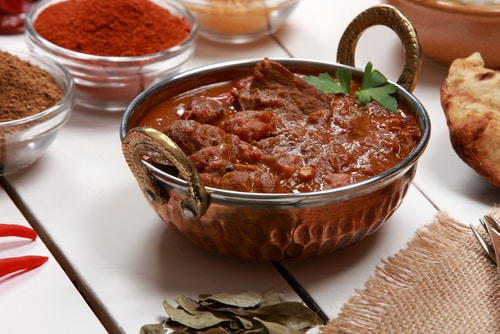
If you are familiar with Indian cuisine, you probably already know just how common Rogan is. Rogan is quite popular and is used generally to add some color and taste to Indian curries.
Therefore, if you don’t have Kashmiri chili, you might want to consider preparing Rogan separately and using any red chili powder.
Avoid using chilies that don’t add a similar red tinge to your dish. More importantly, avoid using hot chili powder, as that might exacerbate the taste of the dish.
To prepare Rogan, start by heating some oil in a frying pan. Let the oil cool down for a little while afterward before you add some red chili powder. Start stirring the oil until it eventually turns a red color.
That’s it! Your Rogan is ready! You can also store it in a separate container (always choose airtight jars) for use later on!
If you love eating South Asian curries, one of the major reasons would be the spices. One such chili is the Kashmiri chili, which is famous for its vibrant red color and a nice kick of spicy taste.
You may not find it easily outside South Asia, so you may want to have some decent alternatives. Therefore, Kashmiri chili powder may prove handy on such an occasion. Else, you could combine paprika in 3/4th amount and cayenne in 1/4th.



